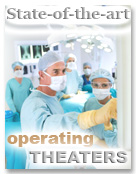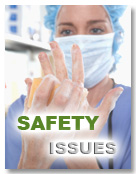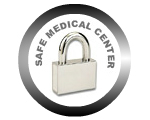
- RP Specialized in:
- Plastic Surgery in Argentina
- Treatments
- Breast Implant Surgery
- Rhinoplasty
- Vaser® Lipo System
- Liposuction
- Eyelid Surgery
- Tummy Tuck
- Breast Lift
- Facelift
- Lifting the Tip of the Nose
- Breast Reduction
- Double Chin Surgery
- Eye Shaping Surgery
- Chin Augmentation
- Ear Surgery
- Mentoplasty
- Eyebrow Lift
- Mini Facelift
- Cantopexy
- Deep Chemical Peel - Resurfacing
- Plastic Surgery Information
- Plastic Surgery Costs
- Cosmetic Procedures
- Hair Transplant
- Dermatology
- Phlebology
- Related information
- Related Links
- Web Directories
- Free Quotation
- Webmaster
» Breast Reduction in Argentina - Plastic surgery
Table of Contents:
- » Pictures Before and After
- » General Information: risks, anesthesia, recovery, pre-operative tests, etc.
- » How to get a quote - Photographs necessary - Requirements.
» General Information: risks, anesthesia, recovery, pre-operative tests:
What is a Reduction Mammaplasty?
This surgical procedure reduces the size of breasts and restores body contour by re-placing the breasts and making them look more natural.
Are there any risks? Which complications may arise?
All surgeries involve Risks:
By giving you all the information you need to make a decision, including information on the risks involved, we show our respect for you and allow you to have the last say in all matters concerning your surgery. We also believe that this speaks volumes about RP Medical Center, about who we are and how we work. It is our responsibility to provide you with all necessary information. We consider that Quality goes hand-in-hand with Responsibility. All patients have a right to be explained how the surgical procedure will be performed, together with the potential risks and complications (which are not caused by a Physician’s errors or malpractice, but which derive from the surgery itself or cannot be anticipated), and the advantages and disadvantages of certain techniques, so that they can think it over and make a balance before making any final decision.
Any surgical procedure has risks (whether an optional surgery, which you choose to undergo, or an emergency surgery); some risks are common to all surgical procedures and others are specific to each type of surgery. No surgery is exempt from risk. A plastic surgery is, after all, a surgery. Risks (each under different incidence percentages; see below) range from post-surgery complications which can be secondarily solved (bad scarring, seroma, skin necrosis, etc.) to severe and fatal complications such as reactions to anesthesia, pulmonary embolism (blood clots or "small blood balls" which could migrate to the heart and block the pulmonary artery causing severe injuries or even death), among others.
In 1997, the results of a survey were disclosed in the United States, based on 400,675 surgical procedures involving Plastic Surgery and Surgical Repair, where 7 deaths were found. The rate of severe complications (hypotension, hematoma, infection, hypertension episodes, sepsis) was 0.47% (1 case every 230 patients). One death occurred every 57,000 patients, that is, a mortality rate of 0.0017%; slightly less than 1 death every 57,000 patients. The survey documented the approximate safety level for plastic surgeries conducted by certified plastic surgeons in authorized facilities in the US, during those years. Another survey conducted in the United States (from 1994 through 1998) further accounted for deaths occurred after Liposuctions. Survey findings reported one death every 5,000 patients, which represents a mortality rate of 0.02 % and 20 deaths every 100,000 liposuctions. The main cause of death was pulmonary thromboembolism.
Risks must be minimized by taking all appropriate preventive measures and complying with certain rules and requirements, including the requirement for pre-surgery tests, pre-operative and post-operative indications, the practice of surgeries in the proper facilities (which must be fully-equipped to cope with any inconveniences), patients’ full medical history, and their compliance with the Physicians’ guidelines after the surgery. It should be recalled that complications and risks may arise even where all precautions were taken and even if the patient is healthy. Given that these complications are not predictable, they may affect the patients of even the best surgeons in any country of the world, despite any precautions taken to reduce potential risks.
In which cases is a Breast Reduction indicated?
Women with large breasts may experience social problems or limitations to wear certain type of clothes or to practice some sports, but they may also suffer from a variety of symptoms and physical problems such as backache and skin problems on the creases beneath the breasts. As a result, surgeons now recommend this type of surgical procedure more and more.
What are the expected results?
After surgery, the patient will be relieved from the physical problems and symptoms associated to large breasts, especially backache. From the esthetic standpoint, this surgery will improve your quality of life in many aspects. You will get rid of the physical discomfort of large breasts, your body will look better proportioned, and clothes will fit you better.
What kind of anesthesia do we use?
Generally, this surgery is performed under general anesthesia.
How many days shall I stay hospitalized?
In most cases, 1-day hospitalization is required.
What side effects can appear after surgery?
It is normal that your breasts feel sore, swollen and they may ache after surgery, especially when you cough or move. These side effects rarely become significant and can subside by the intake of prescribed pain medication. Loss of sensitivity in breasts and nipples can be recovered in a very short time. You may lose sensitivity in nipples and the skin as a result of swelling that will gradually fade after six weeks or so. In some patients, however, it may last up to one year, and occasionally it may be permanent.
Are there any scars left?
You should quit smoking at least 1 month before the surgery. The healing process takes longer in smoking patients. The size of the incisions and, therefore, the size of the scars will depend on the size of the patient’s breasts. Scars are usually located around the areola, downwards from the nipple area, and along the lower crease of the breast if they are too large. Although at first scars are quite noticeable, they fade over time and become almost imperceptible.
What precautions should I take after surgery? When can I go back to normal life?
After care
The patient should rest for 48 hours. After surgery, you should wear a special bra for one month to keep the breast shape. Drains will be used, which are generally removed within the first two days. On days 2 and 3 you can start walking, but keeping your arms still. Your breasts will ache for a couple of weeks. The rest of the time you can walk or go out as long as you avoid lifting weight or making strenuous movements with your arms during the first 10 post-surgery days. Stitches will be removed between the 5th and 7th day after surgery. The remaining stitches will be removed on the 10th day. Avoid lifting or pushing heavy objects for three to four weeks. Dr. Rosso carries out every post-operative control in person. You can return to work and to resume your social activities after two weeks, as long as you avoid strenuous physical activity. During the first two months, you should avoid anything but gently contact with your breasts. If you experience any unusual symptoms, such as bleeding or severe pain, do not hesitate to call your doctor.
If I do not live in the City of Buenos Aires: How long should I stay approximately?
You will need to stay in Buenos Aires for 13 nights and 14 days. If you agree to have the sutures removed by a trusted physician in your city of residence, the total stay will be of about 9 days, as long as you recover normally during the post-operative period.
Which are the required pre-surgical tests?
It is necessary to undergo the following pre-surgical tests within 1 month before the date of surgery:
- I. Blood test: hemogram, blood sugar, creatinin, hepatogram, clotting time, serology HIV.
- II. Cardiology: ECG and surgical risk.
- III. Bilateral Mammogram and Breast Ultrasound (to rule out any breast pathology).
Mandatory pre-surgical instructions:
- Put off smoking 1 or 2 months in advance (all smoking patients have an increased risk of skin suffering in the area being operated on and of a delayed healing of scars).
- Discontinue Aspirin intake (Acetyl salicylic acid) 1 month in advance.
- Discontinue Vitamin E intake 1 month in advance.
- Apply anti tetanus vaccine.
- Anticoagulated Patients: Consult your hematologist to change treatment schedule.
» How to get a quote - Photographs necessary to undergo a surgery - Stay - Requirements:
» To request the right quote and provide all necessary information, go to: "How to travel to undergo a surgery", and read "Step No. 1", "Make arrangements for a surgery by following these easy steps".
» Photographs required for Breast Reduction: 3 photographs showing the whole area from your navel up to your neck: 1 frontal photograph, 1 profile photograph and 1 3/4 profile photograph.
» Stay required in the case of Breast Reduction: 13 nights, 14 days. For further information on stay days, minimum stay, and schedule, among other matters, go to "How to travel to undergo a surgery" , read "Step No. 3", " Make arrangements for a surgery by following these easy steps."
» Hospitalization: 1-day hospitalization at the clinic is required.
» Requirements: Put off smoking 1 month in advance, since smokers have an increased risk of a delayed healing of scars. Smoking inhibits blood flow to the skin, which may interfere with the healing of incision areas, thus producing small holes in the skin (ulcers).
» Why are photographs necessary?
Not only are photographs necessary to avoid paying for an unnecessary and more expensive surgical procedure, but also to determine whether the surgery for which you have come to us is the best type of surgery for you. Photographs are essential for our Physicians to analyze your case, to know how to proceed and offer you the personalized treatment that sets us apart. Your photographs also enable us to make a more precise quote.









